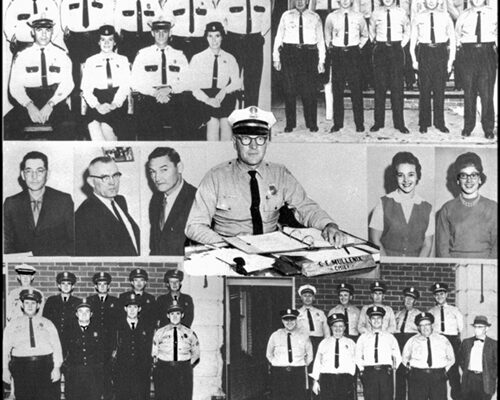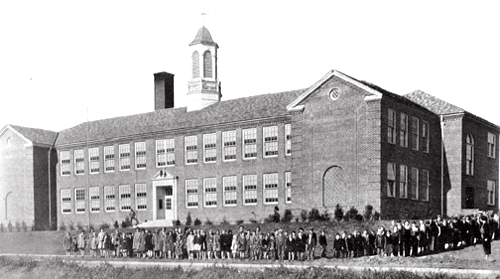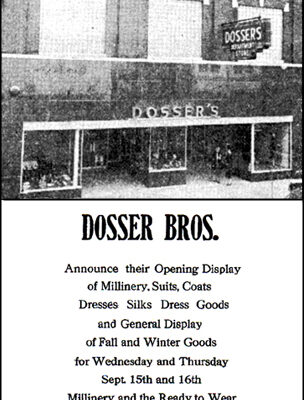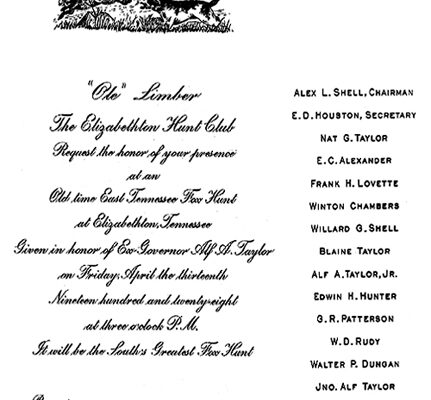Charles W. Marshall, who worked for the Johnson City Police Department between December 1957 and October 1982, shared some prized photos and a Tennessee Fraternal Order of Police Magazine dated April 1966.
The 118-page publication focused on police departments in six Tennessee cities: Chattanooga, Clarksville, Elizabethton, Cookeville, Murfreesboro and Johnson City. The JC section occupied 23 pages that included five locally written articles and 220 advertisements of businesses from that era.
The most striking item was titled, “The Night Has a Thousand Eyes for the Unwary and the Policeman.” Former Johnson City Press-Chronicle staffer, Jim Turner, teamed up with on-duty police officers working the 10 p.m. to 6 a.m. shift for a research project to gain firsthand experience of after-dark city crime.
Turner quickly learned that protection of approximately 35,000 city residents from attack, intrusion and other serious crimes rested that night with just nine officers. Lt. Tom Helton (future chief) commanded the night unit assisted by Sgt. George Adams, second-in-command and Sgt. Mickey Auer, desk sergeant and radio dispatcher. Jim recalled one incident on the first night of his assignment that was typical of the life of a police officer.
“My right hand grabbed for support,” said Jim, “as the police cruiser jumped from 20 to 50 miles an hour, then 60 and 70. As the driver jammed the accelerator to the floorboard, he thrust his left hand toward a toggle switch and the light atop the cruiser slashed its red warning signal through the after-midnight darkness. ‘Ten–four,’ he uttered into the microphone, acknowledging the radio call to rush to the aid of a gas station attendant who was in danger of being beaten by four toughs”
The news reporter, after realizing that he and the officer beside him were the only ones being dispatched to the scene, nervously began to contemplate what role, if any, he would play when they arrived at their destination. He knew that if the circumstances became combative he would have to offer his assistance. Fortunately, when they arrived only the attendant was present. After getting a description of the car and the suspects, the office and Jim attempted to locate them but to no avail.
Most police calls are centered on a troublesome situation that quickly spreads to one or more officers. A common dilemma for the dispatch is when someone reports another person’s actions to the police. Sometimes the desk sergeant has to wade through a barrage of irate verbiage before determining and courteously informing the person that no law had been broken.
Turner learned that occasionally an officer found himself the target of vengeful acts by the person being arrested or by his family or friends. Another ploy was for influential individuals to contact the arresting officer to persuade or intimidate him into lowering or dropping the charge before the case reached court. Some influential violators threatened to have the officer fired for doing his job.
Jim related another difficult situation for police. “An officer stops a car in connection with a traffic violation or because it resembles an auto for which the police are searching, even if it is a partial description. As the officer approaches the seated driver of the car, he seldom has any hint of the driver’s identity or situation. He may be an innocent citizen who has unintentionally exceeded the speed limit or he may be a wanted man who knows his best chance for freedom is to shoot or disarm the officer making him especially vulnerable as he approaches the stopped vehicle.
The staff writer noted how one officer reduced the risk of a potentially dangerous situation after pulling a car over to the side of the road. “He focused the cruiser’s spotlight on the driver before getting out,” said Jim, “and he kept close to the side of the stopped car as he walked up to check the driver. The spotlight momentarily blinded him should he try to fire at the officer, but did not hinder him during the moment the officer stood beside the door.
One of the greatest disadvantages in police work was said to be the nervous strain to which policemen are subjected. The article indicated that three city policemen had undergone stomach surgery attributed to job strain within the past two to three years. The malady was not confined to those who walked beats or patrolled in cruisers; it even applied to what appeared to be a stress-free job – the desk sergeant and radio dispatcher. A man promoted to this job soon asked to return to his former job that caused him to incur a reduction in rank from sergeant to patrolman.
The newsman summarized his experience with the Police Department by saying, “Before beginning this project, I had thought of day-to-day police work as requiring no special attributes other than an unusual amount of physical courage. In addition to possessing an abundance of courage and strength, the good officer must have a sharp knowledge of psychology, skill in diplomacy, infinite patience and a devotion to duty. And, if he is to retain his sanity in the face of all the frustrations that police work entails, he must also have a well-developed sense of humor.”

The ten-photo collage of the Johnson City Police Department taken in November 1962 shows (left to right, top to bottom):
Top Left: (front) John Senn, Wanda Lewis, Paul Odom, Judy Barnett, (back) Carroll Tranbarger, Johnny Howell, Earl Byrd, L.P. Auer, Bill Collins.
Top Right: (front) Ben Treadway, Paul Laws, D.C. Laws, Cecil Clark, George Murray, (back) Tom Helton, Fleenor Masengill, Albert Wood, Ed Friesland, George Adams.
Middle: Bufford Tunnel, Louis Auer, Allen Chandler, Chief C.E. Mullenix, Imogene Bright, Catherine Laughren.
Bottom Left: (front) Wendell Snapp, John Robinson, Charles Miller, Charles Marshall, (back) Garland Musick, Wayne McKeeham, Bobby Greer, D.H. Byrd, Leland Dalton.
Bottom Right: (front) Rodney Rowlett, Harry Reed, Bill Butler, Raymond Conner, Sheelor Norris, (back) Frank Hicks, John Hughes, David Yates, Euel Painter, George Hicks.






